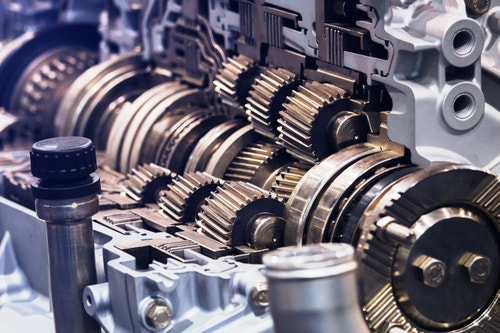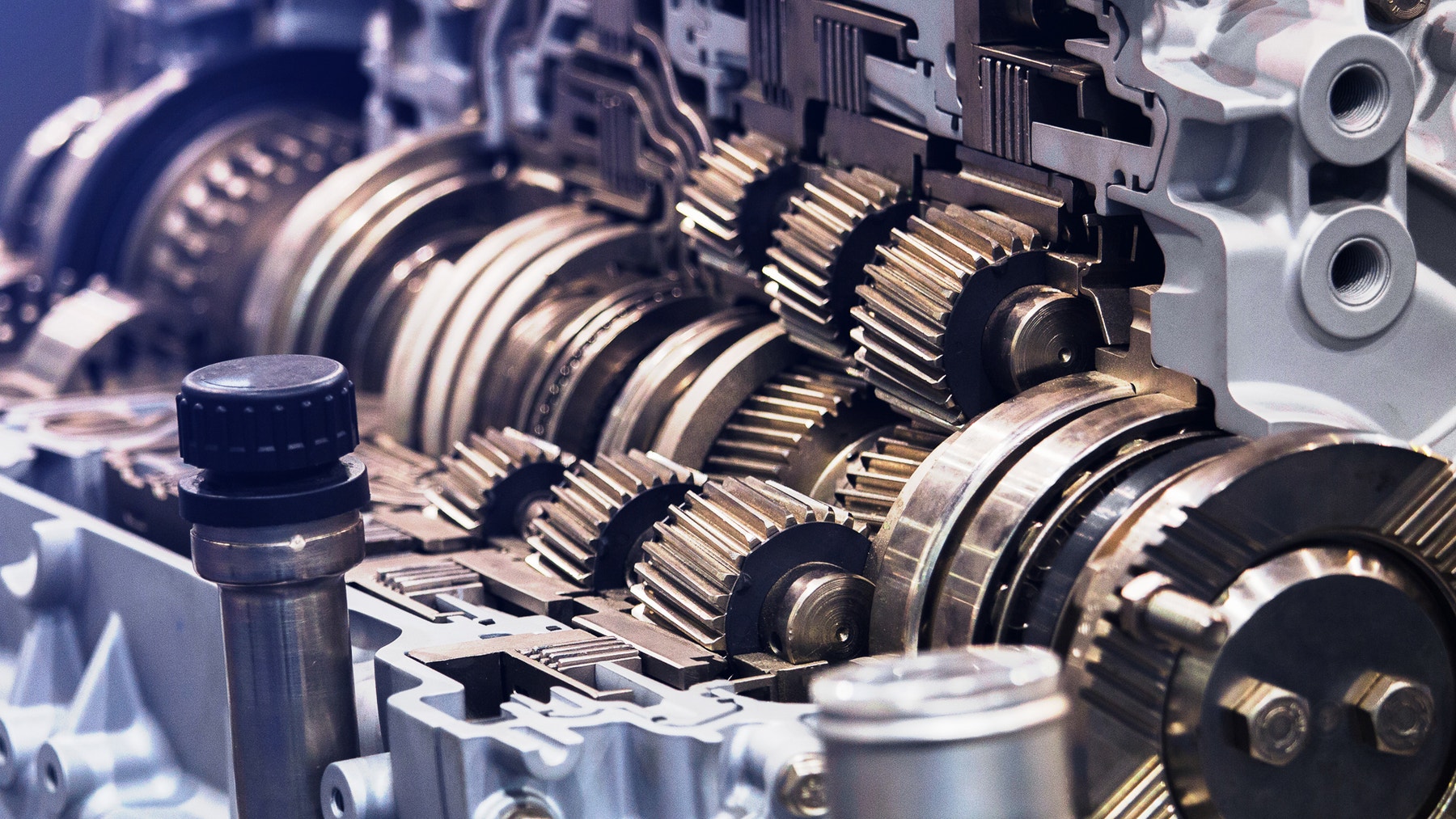Shifting Gears
Build a Geared Vehicle to investigate the impact of using different gear trains.

Lesson plan
1. Prepare
- Read through the pupil material in the EV3 Classroom App.
- Collect information about gear transmissions that you can use to help your pupils to understand concepts such as gearing up and gearing down.
2. Engage (5 Min.)
- Use the ideas in the ‘Ignite a Discussion’ section below to engage your pupils in a discussion relating to this lesson.
- Divide your class into teams of two pupils.
3. Explore (20 Min.)
- Have each team build the Geared Vehicle.
- Allow them time to do a test run to ensure that the model is built correctly and works as it’s expected to.
4. Explain (10 Min.)
- Have each team perform the experiment at least three times for each of the suggested gear trains, and record their results.
- Make sure that they can create their own testing tables.
5. Elaborate (10 Min.)
- Have your pupils analyse how the gear ratio relates to the distance travelled and velocity of the vehicle.
- Ask each team to briefly summarise the results of their experiments.
- Don’t forget to leave some time for tidying up.
6. Evaluate
- Give feedback on each pupil’s performance.
- To simplify the process, you can use the assessment rubrics that have been provided.
Ignite a Discussion
It’s difficult to travel uphill or against the wind on a bicycle. A good gear system is useful in adjusting the power that’s needed to keep moving. When travelling across level ground, you start off in a low gear and then shift into higher gears at higher speeds.

Start a discussion about shifting gears by asking relevant questions, like:
- What do the terms transmission and gear reduction refer to?
- Why are gear units often encased?
- What’s the relationship between the gear ratio and the distance travelled?
- In which situations is gear reduction desirable? In which situations is it not?
Building Tips
Building Instructions
Using the Model
Place the vehicle at least 10 cm from a wall with the Ultrasonic Sensor positioned perpendicular to the wall. Run the program and wait until the EV3 icon is shown on the Display. Press the Centre Button on the EV3 Brick to start the test run. The initial distance to the wall is measured using the Ultrasonic Sensor, and the timer is reset. The vehicle will move away from the wall by running the Large Motor for one rotation. The distance to the wall is measured again, and the elapsed time is measured to calculate the distance travelled, velocity and rotational speed. The calculated values are shown on the Display until the Centre Button is pressed again to prepare for another test run.
Using the Ultrasonic Sensor
The Ultrasonic Sensor generates sound pulses, which form a sound cone in which objects can be detected. When starting the experiment, do not stand next to the vehicle or within the Ultrasonic Sensor's sensing cone; it’s best to stand behind the Ultrasonic Sensor.
Running the Experiment
As they’re running their experiments, remind your pupils of the following:
- The distance travelled (in cm), velocity (in m/s) and rotational speed (in revolutions per second) will be shown on the Display.
- Record the experiment number, gear ratio, your prediction of what will happen, the distance travelled and velocity in a testing table. Make sure to leave space for recording other observations.
- Perform the experiment at least three times for each gear train option. Use the average value to ensure the most reliable results.
- Refer to the images in the ‘Hint’ to see how to change the gear trains.
Coding Tips
Program

Differentiation
Simplify this lesson by:
- Helping your pupils to analyse how the gear ratio relates to the vehicle’s velocity and the distance it has travelled
- Reducing the number of gear trains that the pupils must investigate
Take this lesson to the next level by:
- Explaining the significance of average values (e.g. arithmetic mean versus the median, susceptibility to outliers) that can be used to equalise the measurement errors across a series of experiments
- Encouraging the pupils to define a function that can predict the distance travelled based on the gear ratio
- Challenging your pupils to come up with ways of improving the accuracy of their experiments
Assessment Opportunities
Teacher Observation Checklist
Establish a scale that suits your needs, for example:
- Partially accomplished
- Fully accomplished
- Overachieved
Use the following success criteria to evaluate your pupils’ progress:
- The pupils have described the role of the gear ratio in predicting the outcome of their experiments.
- The pupils have applied mathematical concepts and/or processes to determine the relation between the gear ratios and the distances travelled.
- The pupils have evaluated the experiments’ procedures and identified independent, dependent and control variables.
Self-Assessment
Have each pupil choose the level that they feel best represents their performance.
- Bronze: I’ve performed the experiments but haven’t described the role of the gear ratio in predicting the outcomes of the experiment.
- Silver: With some help, I’ve described the role of the gear ratio in predicting the outcomes of the experiment.
- Gold: I’ve used my understanding of the role of the gear ratio in the experiments to predict which gear ratio should be used in a vehicle that would be suitable for moving heavy loads.
- Platinum: I’ve used my understanding of the role of the gear ratio in the experiments to predict which gear ratio should be used in a vehicle that would be suitable for moving heavy loads.

Language Arts Extension
To incorporate the development of language arts skills, have your pupils:
- Create a brief report focusing on the results of their experiments and real-world examples of when gearing up and gearing down can be useful
- Create a presentation explaining the results of their experiments and what they’ve learned
Note: This will require additional time.
Career Links
The pupils who enjoyed this lesson might be interested in exploring these career pathways:
- Manufacturing and Engineering (Pre-Engineering)
- Science, Technology, Engineering & Mathematics (Science and Maths)
- Transportation (Automotive Technology)
Teacher Support
The pupils will:
- Learn when to gear up or down
- Learn that changing the gear ratios results in different velocities
Science Programmes of Study: Key Stage 3 National Curriculum in England
Scientific Attitudes:
- Pay attention to objectivity and concern for accuracy, precision, repeatability and reproducibility
Experimental Skills and Investigations:
- Ask questions and develop a line of enquiry based on observations of the real world, alongside prior knowledge and experience
- Make predictions using scientific knowledge and understanding
- Make and record observations and measurements using a range of methods for different investigations; and evaluate the reliability of methods and suggest possible improvements
Analysis and Evaluation:
- Present observations and data using appropriate methods, including tables and graphs
- Interpret observations and data, including identifying patterns and using observations, measurements and data to draw conclusions
Energy Changes and Transfers:
- Simple machines give bigger force but at the expense of smaller movement (and vice versa): product of force and displacement unchanged
Computing at School Progression Pathways
Programming & Development:
- Creates programs that implement algorithms to achieve given goals. (AL)
- Understands the difference between, and appropriately uses if and if, then and else statements. (AL)
- Uses a variable and relational operators within a loop to govern termination. (AL) (GE)
- Understands that programming bridges the gap between algorithmic solutions and computers. (AB)
Information Technology:
- Makes appropriate improvements to solutions based on feedback received, and can comment on the success of the solution. (EV)
- Uses criteria to evaluate the quality of solutions, can identify improvements making some refinements to the solution, and future solutions. (EV)
- Designs criteria to critically evaluate the quality of solutions, uses the criteria to identify improvements and can make appropriate refinements to the solution. (EV)




